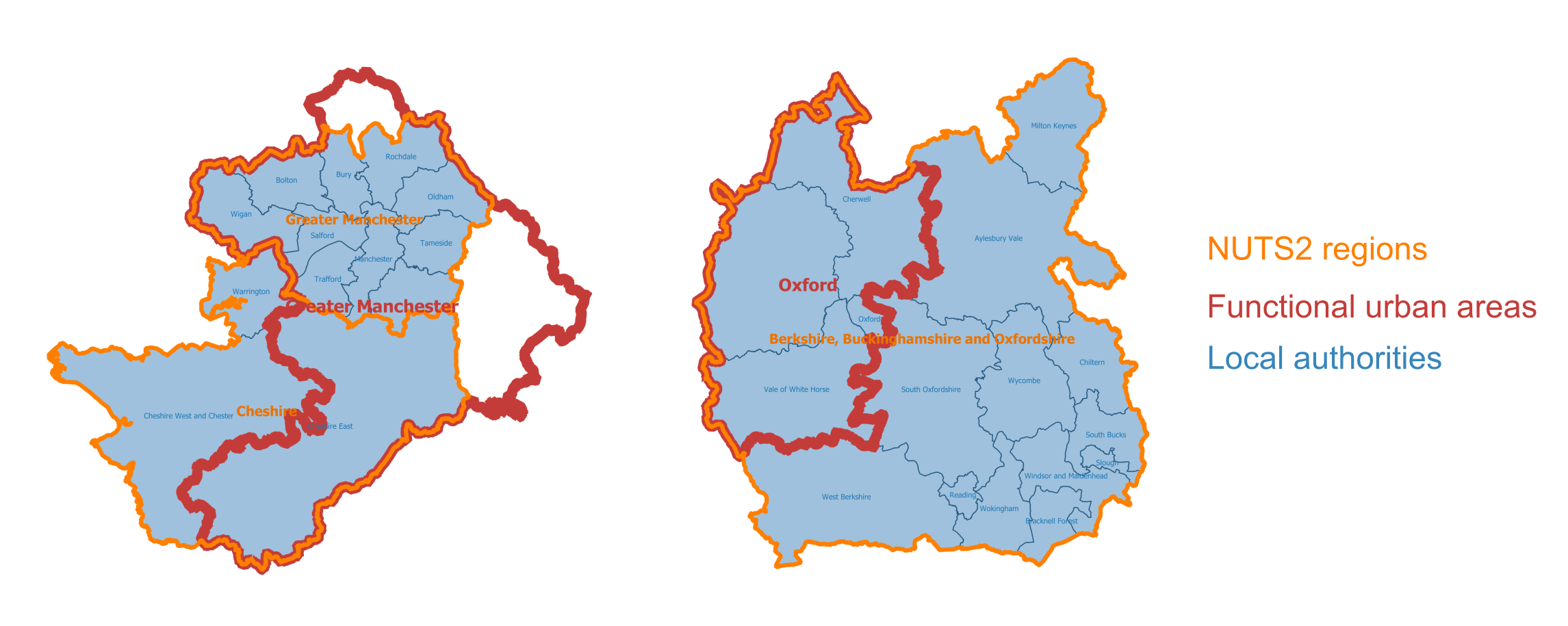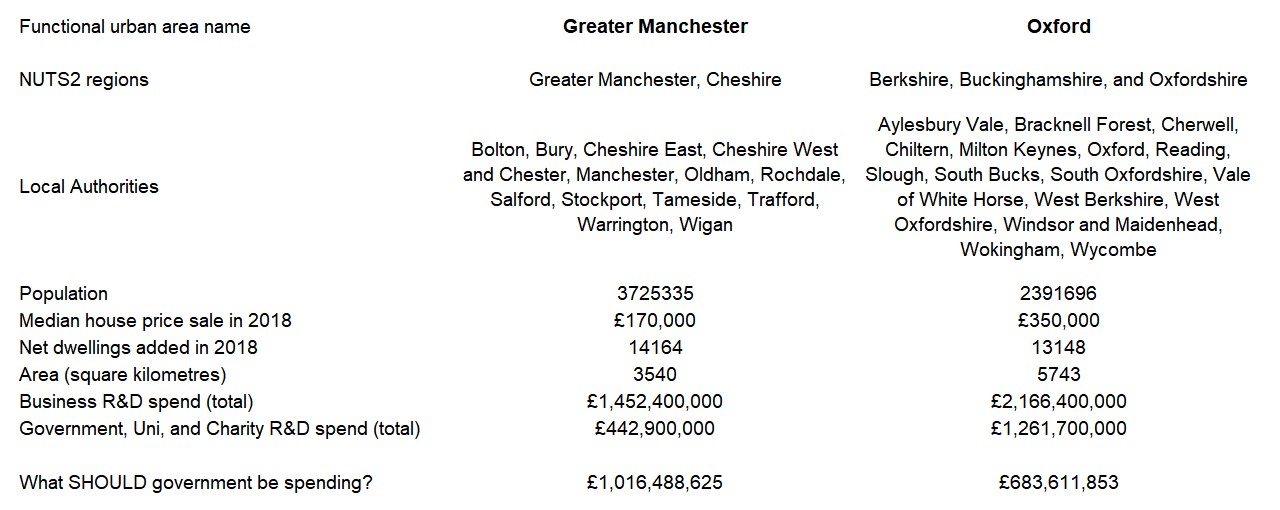R&D Royal Rumble: Manchester vs. Oxford
,
Does the UK government spend too much on research and development (R&D) in Oxford?
Does the UK government spend too little on research and development (R&D) in Manchester?
Those are two really good questions. I think that the answer to both is yes, and I’m going to share the data behind why I think that.
Geography
But first, geography.
In this blog post I’m going to be comparing the functional urban areas centred on Manchester and Oxford. But the smallest geography at which UK data on R&D spending is available is NUTS2, and these two geographies do not fit together well.

Greater Manchester functional urban area is quite big, extending significant beyond the NUTS2 region of Greater Manchester, to Rossendale in the North, parts of High Peak in the East, and East Cheshire to the South.
Oxford’s functional urban area is quite small, covering only about a third of an NUTS2 region.
But in order to get things done you have to make compromises, so I’ve been very generous to Oxford and extended it all the way to Reading, Slough, and Milton Keynes so that I can use the NUTS2 region for R&D data. Greater Manchester needed less of a fudge. Cheshire West and Chester get added, as does Warrington. But it loses Rossendale and High Peak.
With my geographies defined I set out to collect the three pieces of data that I think are a good start for calculating how much the UK government should be spending on R&D in a place,
- Number of houses built last year (R&D is meant to create growth, and the number of houses built a good proxy for how willing a place is to grow).
- Median house sale price (R&D is meant to create growth, and the current median house sale price is a good proxy for how much spare capacity there is to grow into. Low house prices mean a place can accommodate more growth).
- Private sector R&D. I think that businesses as a group make rational decisions about where to invest in R&D. We know that across countries business tends to spend about twice what government spends on R&D. I think that we should see the same pattern in the UK.
Then I multiplied 1 by 3, divided by 2, and multiplied it all by 8.4 so that the total amount of government spending was unchanged.
Here’s the result. The UK government should cut spending on R&D in Oxford from £1.3bn/year to £0.7bn/year. The UK government should increase spending on R&D in Greater Manchester from £0.4bn/year to £1bn/year.

Fairness
There is no fairness in my formula. There is no appeal to “rebalance” spending or “help the left-behind North”.
I just want to make sure that the UK government spends its money in the places that will generate the best economic return for the UK. That means spending less in Oxford and more in Manchester.
Simplification
This is a massive simplification. I’ve spent a few hours on this.
But that doesn’t mean that what we do now is much better. A big chunk of UK R&D funding is assigned as the result of meetings in South-East England of small groups of people acting on their hunches. This system is already better than that and with a few months of hard work I could create a much more complicated system that said pretty much the same. If you want to pay me to do that, send me an email.
